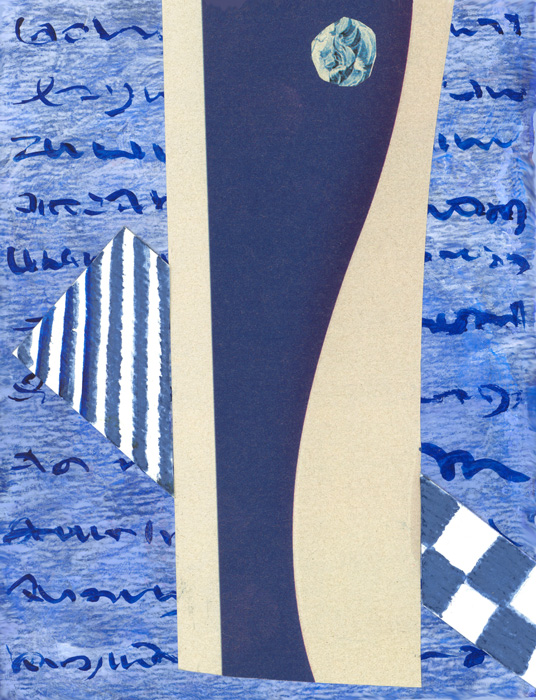On Curry Powder, an Indian Dancer and Mouclade à la Honfleur
Years ago while we were having some renovation work done on our house in Maine I was forced to pack away my spices and handy kitchen appliances. After a few weeks of making do with food thrown on the Hibachi and feeding our boys pizzas and pasta I began to crave some decent Indian food. Back then the restaurant scene in our area for Indian, Chinese, Thai or any exotic cuisine was non-existent. I lamented to the late Indian dancer Bhaskar who had called me from New York that I was going nuts deprived of some plain old desi food. ‘Honey’ he said, ‘I make a fab keema with a packet of Lipton’s Onion Soup Mix and curry powder. It’s a breeze to cook. No messy chopping or grinding involved. All you do is brown some ground meat, dump in the soup mix, add curry powder and some water and cook until the meat is done. Presto.’
Curry powder? I had never used curry powder. The great joy of cooking Indian food is in deftly combining a myriad of spices; sometimes whole, sometimes ground. My spice shelf is also my pharmacy. Before calling the doctor I will reach for fennel, fenugreek, cayenne, cloves, cardamom or cinnamon. Turmeric, that gives many Indian dishes a distinctive yellow/brown hue, contains curcumin (unrelated to cumin) credited with possessing numerous therapeutic properties.
I was desperate. I couldn’t wait to try his recipe and dashed to the supermarket and picked up the ingredients. Bhaskar was right. It was a breeze to cook up. What my well-meaning friend lacked in culinary skills he made up for with his flamboyant jazzed up Indian dancing. He played Tarzan in Tamil movies in Madras. He had a role in a horror film on Charles Manson, “I Drink Your Blood,’ and he danced on Broadway. ‘Honey’ he would say to me, ‘everything Jack Cole choreographed he stole from me.’
The keema tasted worse than it smelled. My husband deposited the uneaten keema in a covered pot out in woods behind our house to deal with the next day. Later that night we were jolted out of a deep sleep by yelps and screams coming from the woods. A large raccoon had got his front paws and face into the pot of curried keema and was in obvious pain. It was some weeks before the raccoon and his friends returned to forage our garbage. And even longer before I touched curry powder again.
Curry powder re-entered my life in the most unexpected manner. It was in Honfleur, the picturesque coastal town in Normandy brought to life on canvas by artists Claude Monet, Gustave Courbet and Eugène Boudin, and was the birthplace of composer Erik Satie. My family and I, and the friends we were visiting in the area, went one evening to have dinner in a seafood restaurant along the Port Commercial where the Seine winds its way out to sea. Creatures of the sea arrived on our table on tiered platters lined with seaweed. Some, like the sea urchins and raw oysters, were intimidating to my uninitiated palate so I delved into the only cooked seafood on our table that my son, seated next to me, had ordered. It was a mouclade, mussels floating in a creamy golden sauce redolent of saffron and, yes, a hint of curry powder. It looked like a painting, with deep blue shells poking out of the pale yellow sauce, and tasted of the sea. It was simply divine. The next time I encountered mouclade on a menu was at the Le Bistrot du Dôme on the Rue Delambre in Paris. It was just as divine if not better. I relished it stingily as I tried to identify the various ingredients – and again that unmistakable hint of curry powder.
I invested in a new jar of curry powder and began to play around with various recipes to recreate those flavors from France and ended up with my own version which I have included here. Most recipes I found were thickened with egg yolks and the mussels were removed from their shells. I like mine soupier and lighter. In Maine we have access to succulent wild mussels – that is whenever they are available. If you can’t find them and don’t feel inclined to wade into the water to gather your own, cultivated mussels from Prince Edward Island are a good alternative, especially since they are easy to clean and free of grit. But check the date and make sure the mussels are tightly shut and shells not broken. The amounts in my recipe are approximations.
Mouclade à la Honfleur:
Step one: For the Mussels (or moules mariniere)
4 Pounds mussels.
4 Tbs. finely chopped onions
3 Garlic cloves (smash with the flat side of knife, remove peel and mince)
4 Sprigs of flat parsley
4 – 5 Sprigs of fresh thyme (or 1 tps. of dried)
1 Bay leaf
2 Tbs. unsalted butter (optional)
2 Cups dry white wine (or more)
Splash of Pernod (optional)
1. Clean and scrub the mussels
2. In a large pot melt the butter and cook onions and garlic until translucent. Add parsley, thyme and bay leaf. (To cook without butter just combine all the above ingredients and cook as directed below).
3. Add the mussels, white wine and Pernod. Bring to a boil and cover the pot. Shake the pot a few times and cook for about five or six minutes until all the mussels have opened. Discard any unopened mussels.
4. Transfer the mussels to a bowl and cover and keep warm.
5. Transfer the remaining liquid to a saucepan and cook on low heat until slightly reduced (6-10 minutes or so).
Step two: For the sauce
2 Tbs. finely chopped onions
2 Tbs. unsalted butter
2 Tbs. flour
1/2 Tps. curry powder (more or less at your discretion)
Pinch of cayenne (optional)
1 Cup heavy cream
1/4 Tps. saffron threads (to get the maximum flavor place in a large spoon and roast gently over flame for about 30 seconds, crumble and place in a cup with 2 tbs. hot water and steep for at least 10 minutes).
Juice of 1/2 a lemon
More white wine if needed
Chopped flat parsley to garnish
1. In a large pot melt the butter and cook the onions until soft.
2. Stir in the flour and cook the roux over low heat for about 2 minutes while stirring.
3. Add the curry powder and cayenne and cook for about a minute.
4. Remove from the heat. Strain the reserved liquid from cooking the mussels into the roux.
Simmer gently for a few minutes. Thin with white wine if needed.
5. Add the heavy cream, saffron and lemon juice and cook over low heat.
(The sauce, minus the cooking liquid and heavy cream can be made ahead of time and reheated before continuing with the recipe).
Add the reserved mussels in their shells and heat through. Divide mussels and sauce into 4 large flat soup plates or bowls, sprinkle with chopped parsley. Serve with good French baguette to sop up the sauce. Use the first mussel eaten to scoop out remaining mussels from the shells.
This recipe will serve 4 as a hearty first course.
For those of you who are lactose or gluten intolerant or watching your cholesterol intake, the first 3 steps of this recipe will produce a perfectly respectable moules mariniere.
© Sukanya Rahman, Aug 2010 (originally published in Art Insider)
Copy Right
All Rights Reserved ©Sukanya Rahman 2011
Categories






